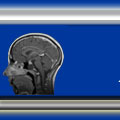




Optical Imaging-Current Status
Optical imaging techniques are still currently research topics with fairly limited clinical application. Optical coherence tomography (OCT) is an exception. There is some excitement about using OCT for dermatology and endoscopic applications, as well as opthalmology. They are even farther from having been used during surgery, although there is not much, if any, that needs to be made to these systems for them to be used in a surgical setting. Diffuse optical techniques are currently being developed at many locations, Dartmouth, University of Pennsylvania, and UC Irvine among them. One of the first clinical applications will be for breast imaging. Human trials are currently being done on this area of DOT. Other clinical uses include functional brain imaging, which may be useful for surgery, and extremity imaging. Extremity imaging could prove to be useful for traumatic injury, particularly to muscle. The current limitation on OCT is depth. Imaging depth is only a few millimeters, which isn't very useful for most surgical imaging needs. DOT is limited by poor resolution and slow image acquisition. It is often used in conjunction with another, higher resolution technique such as MRI. Current acquisition times for a set of images can be tens of minutes to over an hour. This is not acceptable for surgical imaging and must be improved to be useful in surgery, or clinically for that matter. |
|
Website created by: David Thayer, last edited: May 29, 2006